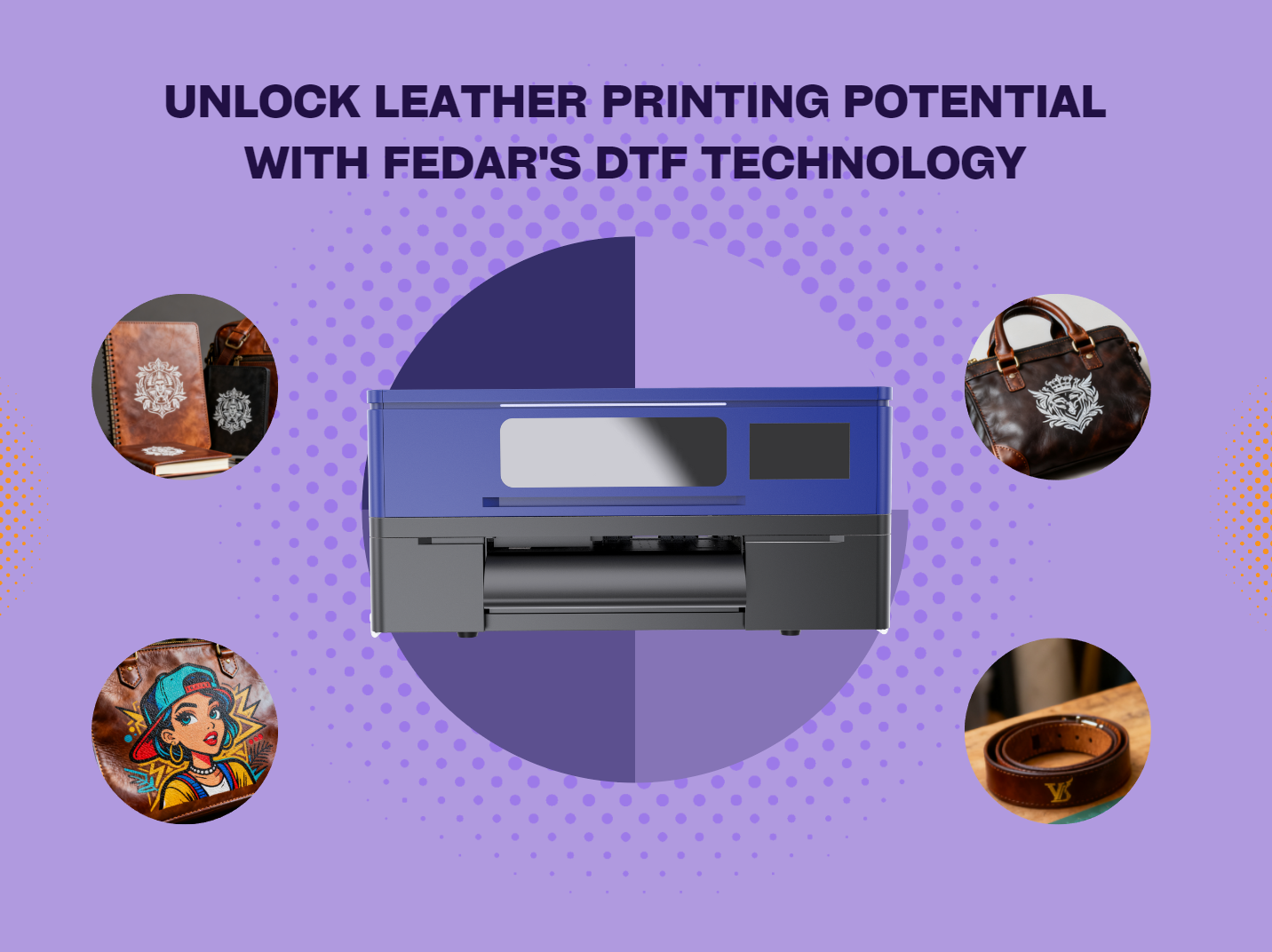In recent years, leather has maintained its prestigious status in fashion, being widely used for bags, boots, jackets, and skirts. But did you know? Fedar’s DTF transfer technology now enables high-quality, durable customization on leather products. As a leading Fedar manufacture of DTF and t-shirt printers, we’ll guide you through optimal application techniques.
Can DTF Print on Leather?
Yes! Fedar’s DTF printer technology achieves exceptional adhesion and durability on leather when proper procedures are followed. The prints won’t peel or crack when correctly processed.

How to Apply DTF on Leather:
Surface Preparation: Clean with leather-specific cleaner; apply conditioner for enhanced adhesion
Test Printing: Always conduct test prints on samples or hidden areas
Printing Process: Create designs using compatible software → Print via Fedar DTF printer → Cure and powder
Heat Pressing: Transfer at 130°-140°C for 15 seconds → Cool completely before film removal
Optimal Leather Types for DTF:
Smooth natural leathers (calfskin, lambskin)
Artificial/PU leathers
Surface-treated leathers
Less Suitable Leathers:
Heavy grain or embossed leathers
Oil-tanned varieties
Excessively thick or flexible leathers
Pro Tips from Fedar Manufacture:
For challenging leathers, use pretreatment sprays and adjust heat press parameters. Fedar’s DTF printers demonstrate remarkable versatility, handling everything from leather accessories to cotton t-shirts with equal proficiency. This flexibility makes Fedar equipment ideal for diverse customization businesses seeking to expand their service offerings beyond traditional garments.